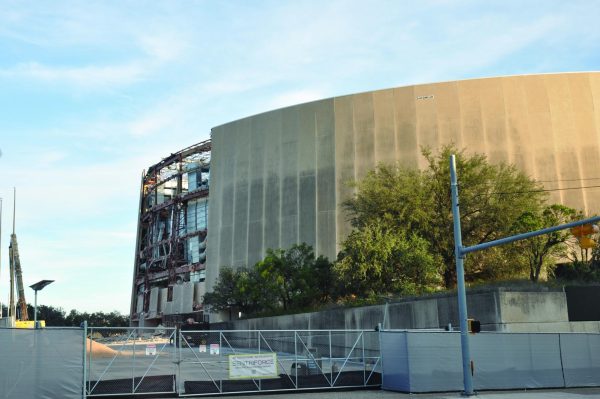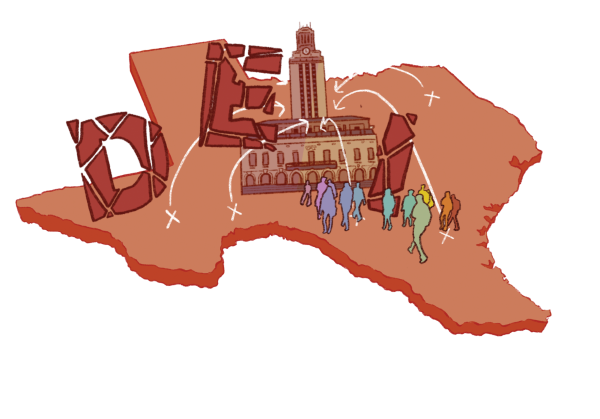Austinites Adopt New Normal
May 5, 2022
March 2020 was a turning point when COVID-19 closed schools across the country, and many adapted to adjust their lives by operating virtually making sure to keep a cautious distance. LASA students adapted by starting personal gardens and attending virtual school, while celebrities began to livestream their daily activities across social media. The “New Normal” is a phrase coined to discuss the uncertain future of our lives in regards to COVID-19 and how individuals and communities will continue to adapt. UT Austin public health professor Marilyn Felkner studies the way health and disease impact our communities.
“Time only moves forward, so it is more helpful to think in terms of progress than returning to a ‘normal’ from the past,” Felkner said. “Our U.S. society has learned from and adapted to many challenges―wars, economic downturns and recoveries, and both improvements and setbacks in health issues. We have to live with COVID. The virus is highly unlikely to disappear.”
Countries such as Norway and Denmark have taken a “Live with COVID” approach and lifted all restrictions despite high case numbers, according to The New York Times. They have resources that allow them to do this like health infrastructure, high vaccination rates, and readily available testing. In terms of Austin taking this same approach, chief of Division of Infectious Diseases at Dell Medical School Kristin Mondy believes Austin might not have the capabilities to do what certain Nordic countries have been able to do.
“We can expect such countries to have more success in just living with COVID compared to our country for a number of reasons,” Mondy said. “Much higher vaccination rates, better preventive health care and outpatient healthcare infrastructure, especially compared to Texas, where our uninsured rate is double that of the U.S. overall, and fewer patients at high risk for severe COVID disease. We have much higher rates of diseases like obesity and diabetes, in part due to our health infrastructure problems.”
In the future, Mondy believes that, although COVID-19 won’t completely disappear, the dangers of COVID-19 will significantly decrease. She also says that with a decrease in danger, restrictions most likely wouldn’t return to how they were in earlier days of the pandemic.
“If we start to have future variants that are no deadlier than seasonal influenza or are even milder like the common cold, then we can expect huge numbers of people to get infected yearly, but we shouldn’t have to go back to the types of restrictions seen in the past when we had much higher attributable mortality due to earlier COVID strains,” Mondy said.
Mondy believes that with a decrease in mortality rates as the pandemic progresses, it’s looking like Austinites are beginning to see more of the “new normal.” For the most part, many will be able to return to their pre-pandemic lives, but will add certain aspects of life during the pandemic to them as well.
“I think the new normal will eventually look similar to the ‘old normal’ for a number of places, such as schools, where we have learned that in-person instruction and interaction is very important,” Mondy said. “However, for many businesses the pandemic has shown that working remotely can be a success and can improve costs and efficiency.”
Mondy also believes that we’ll have a shift in outlooks on public health and restrictions for COVID-19. This change in outlook would occur with individuals and be reflected in future metrics and restrictions, according to Mondy.
“Going forward we will probably see much fewer mask mandates and more emphasis on viewing COVID like seasonal influenza where we have more emphasis on booster shots and early outpatient therapies,” Mondy said. “Many people now have some degree of natural and/or vaccination immunity, so as long as we don’t have new variants that are significantly deadlier than previous ones, public health guidance for counties will shift away from using metrics such as overall case counts to metrics that take into account disease severity more.”
Currently, cases in Austin are at the lowest they’ve been since the very early days of the pandemic, coming down from a spike in January. On March 23, the citywide mask mandate was lifted.
“Currently, there is no downside to lifting the mask mandate,” Felkner said. “Both Travis County and Texas have case numbers, deaths, and hospitalizations that are as low as they were in the earliest days of the pandemic. Looking at states within the U.S. and countries around the world, locations that had strict mandates do not consistently have lower case or death rates. Mandates do not guarantee that people comply with the recommended behaviors, sometimes they have the opposite effect.”
Other public health experts share this same opinion. Mondy believes the lifting of the mask mandate is a step in the right direction.
“I think it’s good that we have lifted many restrictions in Austin,” Mondy said. “Currently we have very high hospital capacity, vaccination rates are reasonably high, certainly higher than other parts of the state, and overall prevalence is low. In this setting and with Omicron, using masks will not help much. The main negative consequence I could see is a higher exposure risk for immunocompromised persons who might not have had a good response to the vaccine.”
With the removal of the mask mandate, Austinites have begun to look ahead to a “new normal,” living without masks in their daily lives. Even without masks, the future of COVID-19 is nebulous and still changing, and we must continue to monitor changing conditions, according to Felkner.
“We need to continue to promote vaccination,” Felkner said. “We need to continue surveillance for variants and assess the effectiveness of the vaccine against variants. We might need to recommend resuming protective measures such as masks and social isolation if local conditions change.”
Public Information Specialist for Austin Public Health Sydney Benter says that although the possibility of returning to pre-pandemic life is exciting, it’s a process that won’t happen immediately, and Austin’s citizens should remain cautious. Benter also believes our progress should be celebrated, but that doesn’t mean COVID-19 should be ignored.
“While Austin-Travis County’s COVID-19 infection and hospitalization numbers are among the lowest we’ve seen, it’s too soon to let our guards down entirely,” Benter said. “There are ongoing outbreaks abroad and there could be additional variants and sub-variants for which we should be prepared. Exercise caution depending on your personal risk factors. If you’re not at risk for severe illness from COVID-19 and are up to date with vaccines, enjoy the progress we’ve made, but keep in mind we’re not totally out of the woods just yet.”









